IMPORTANT: This biographical comic is about the life of China’s only female Emperor, Wu Zetian of the Tang-dynasty era, and was originally created for one-half of a 2019 Masters thesis in Research (Arts) at Macquarie University (click here to read the written thesis). The two parts–graphic novel and written thesis — are meant to be read together. Ultimately, it received a score of 85/100 (HD) which led to my PhD scholarship. Note that the history of Wu Zetian in this book is based on academic history, NOT popular history. For example, few modern historians believe that Wu Zetian murdered her own daughter to frame Empress Wang — that is a historical fabrication that happened 300 years after Wu’s death. See the Footnotes & Bibliography section for the proper sources.
This has been properly researched at the university level, and includes references to academic books and articles in the footnotes, bibliography, and art references. (42 pages, Ages 10+)
Currently, you can buy this at my shop and on Amazon. Schools can order it via Scholastic Australia (ASO).
![]()
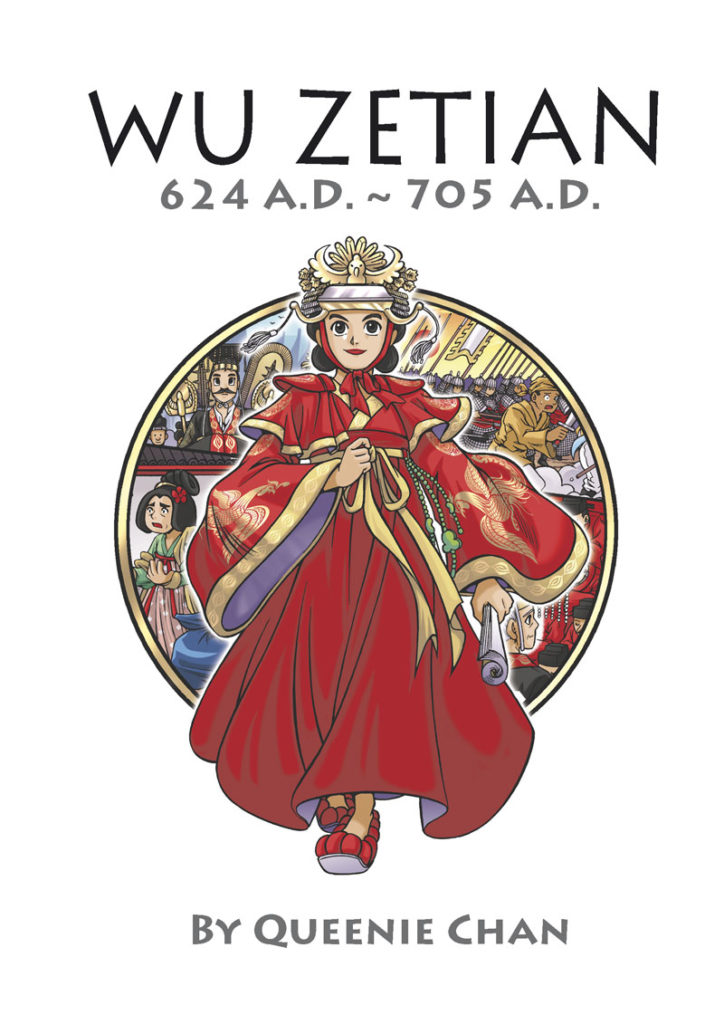
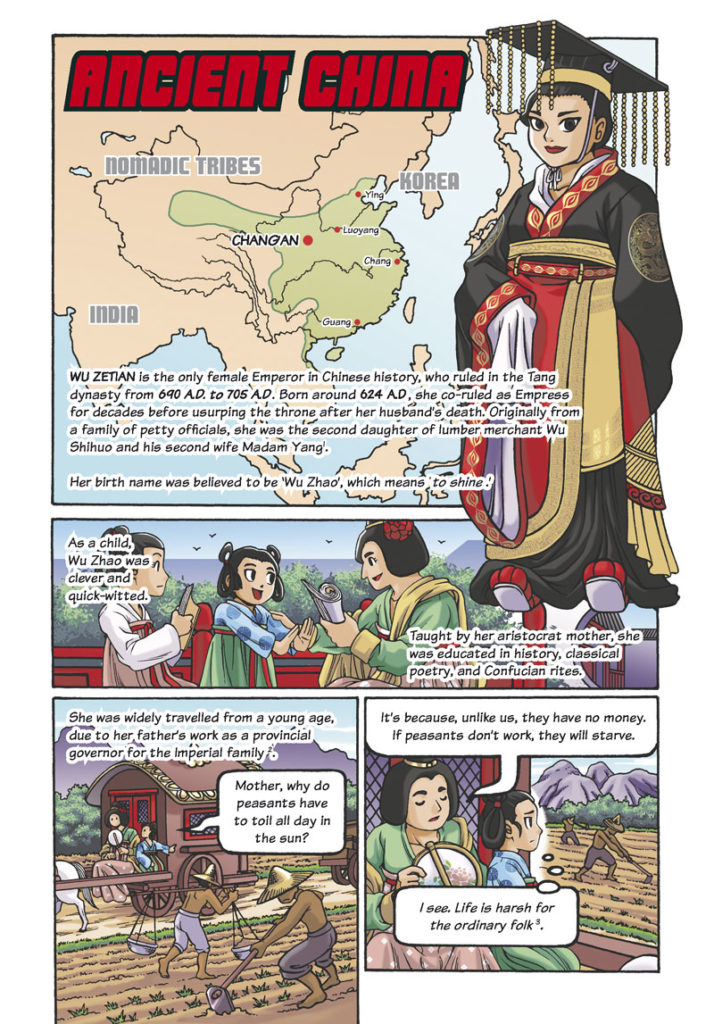
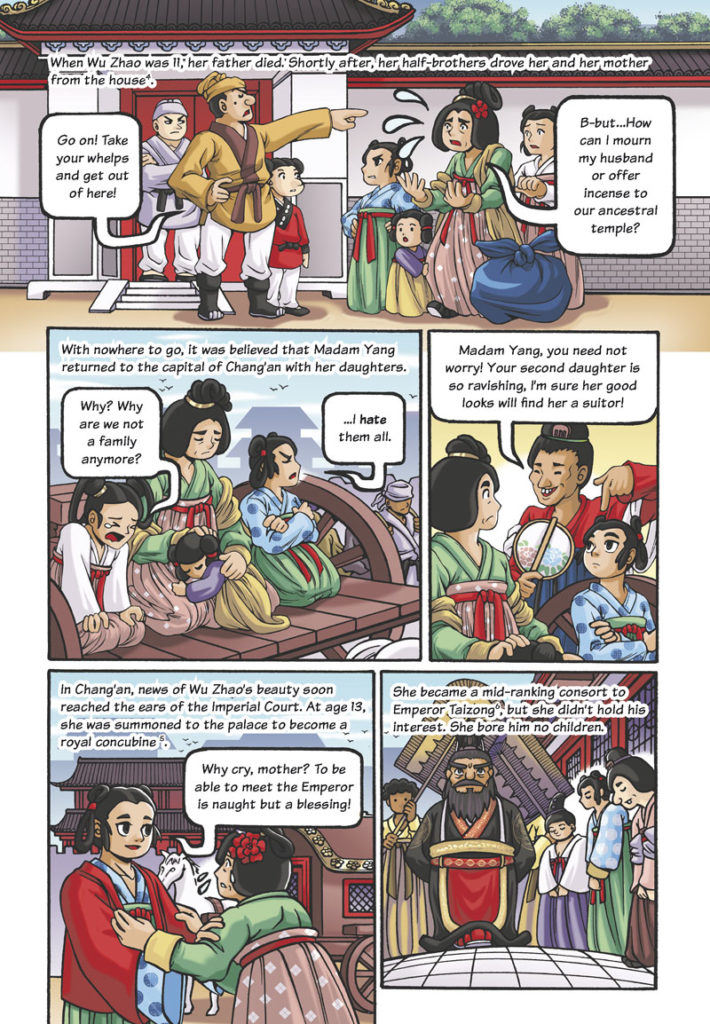
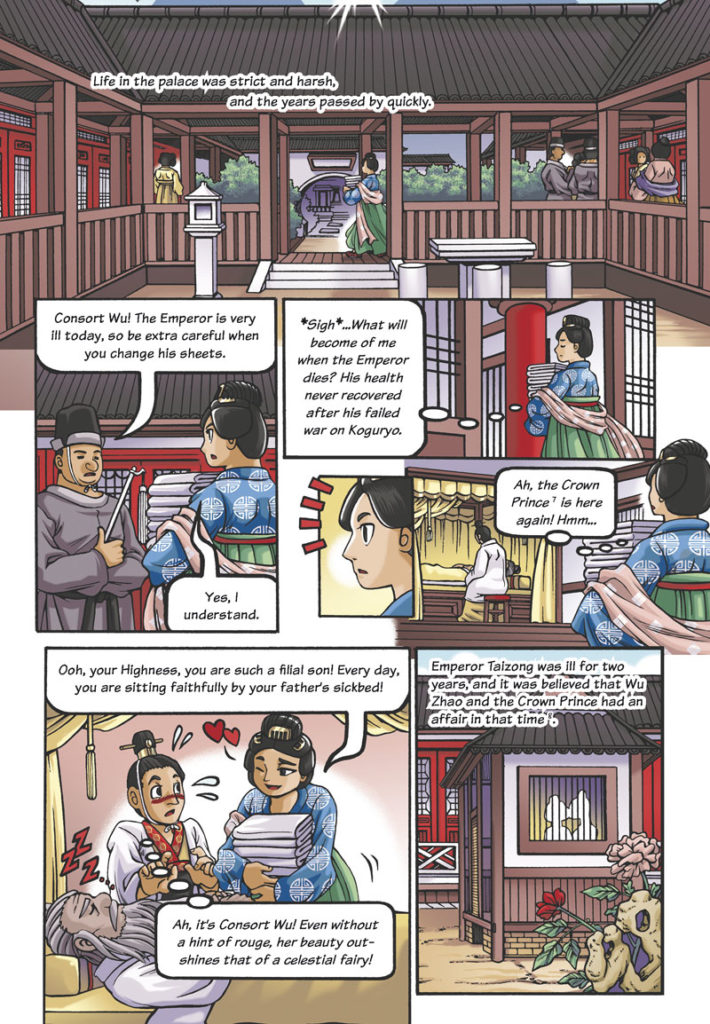
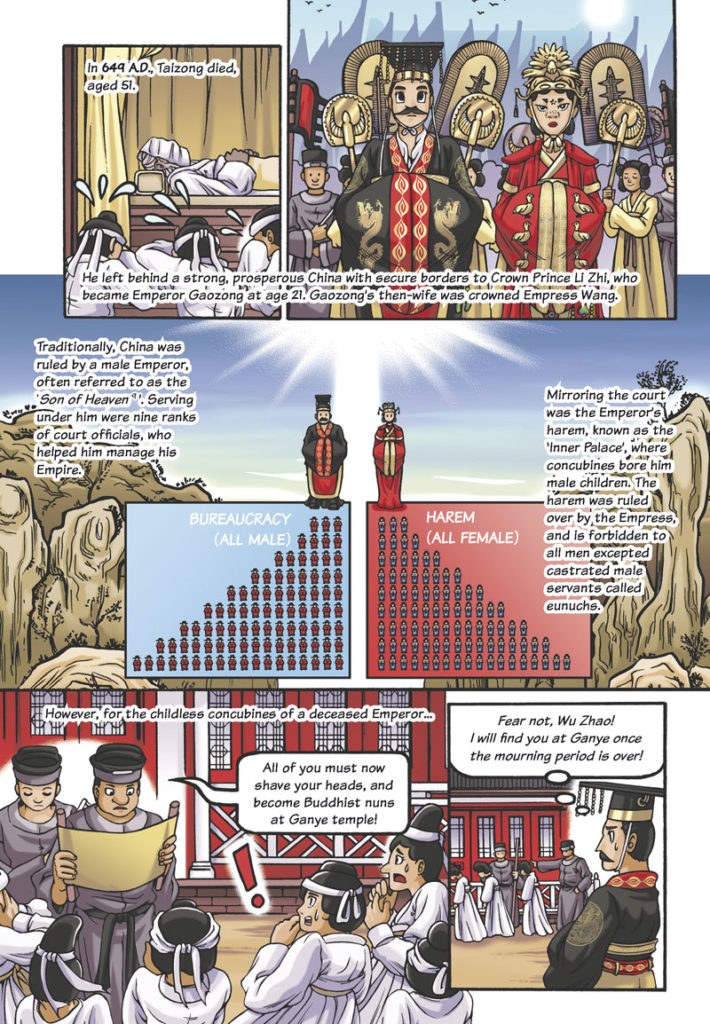
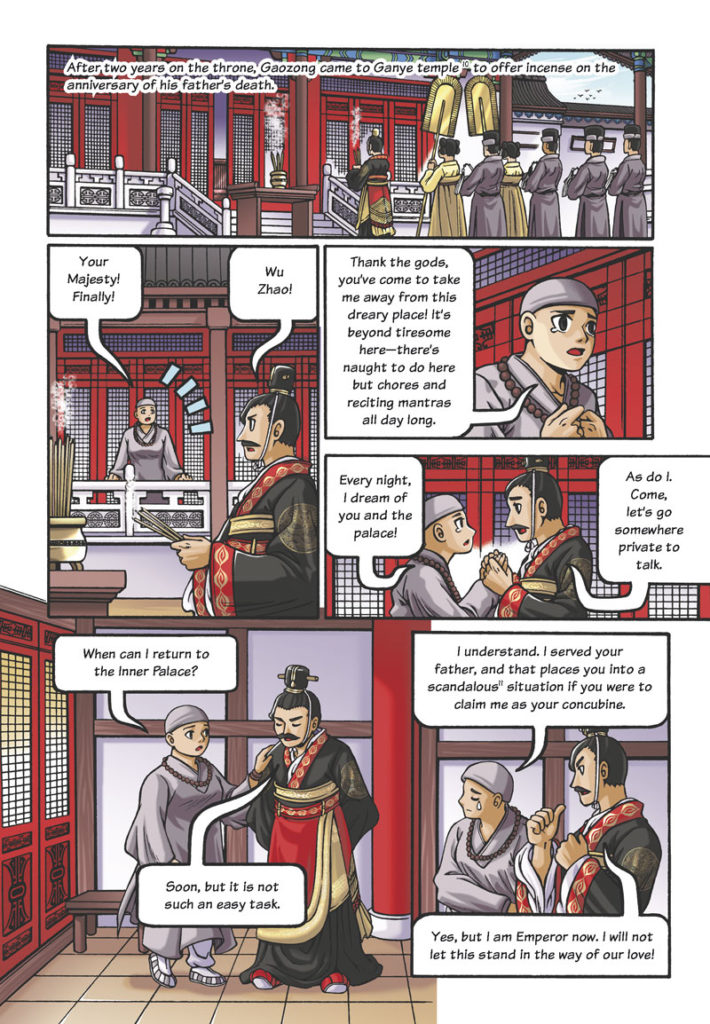
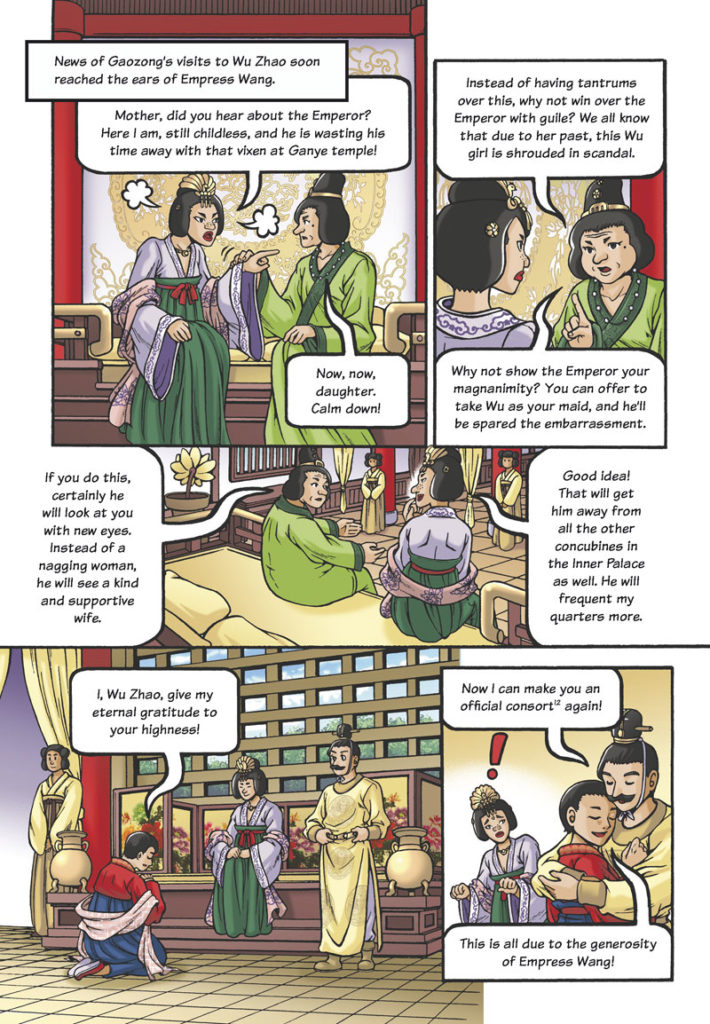
The rest of the story is available in print.
You can buy at my store.

Questions for class discussion (Teacher’s Notes):
- Wu Zetian was a commoner before she became part of the Imperial Palace. Do you think that someone who was born a commoner would make a better ruler than someone who was born into nobility?
- Wu was chosen to become an Imperial concubine due to her beauty, and research into Tang era China will reveal that fashion and beauty standards of the time required women to be plump and stocky. How and why are our modern society’s beauty standards so different?
- A diagram showing the structure of the Chinese Imperial Court is on page 4. How does the image visually depict the importance of “balance” and “harmony” to the Chinese?
- The Chinese court was strictly segregated by gender. How does the art depict the different roles of the male and female servants? Also, what other roles in court are shown in the art?
- Wu’s history was written centuries after her death, and the original record accused her of having murdered her infant daughter. However, this graphic novel depicts the incident as a stillbirth, since modern historians dispute this murder accusation and thinks it’s fabricated due to sexism of ancient historians. Discuss how something like sexism by historians can distort an account of events. How about in our modern times and everyday scenarios?
- This graphic novel shows Wu throughout her whole life, from age 6 to 80. How would you visually depict a person getting older? Fun activity: have a go at drawing yourself (or the person next to you), at various ages from a toddler to an old person.
- In historical record, Wu’s husband Emperor Gaozong was depicted as a weakling who was terrified of his wife. However, this graphic novel depicts Gaozong and Wu as a loving and balanced couple—with all of the facts remaining the same. Would you say that the historical description of Gaozong as a weakling is sexist against men? If so, why or why not?
- To become Emperor, Wu executed many officials who opposed her (yet freed others), to the extent where people begged her to become Emperor so that the campaign of terror would stop. Discuss how the graphic novel, through paneling layout and the visuals, shows that she appeared to be very hands-off, despite being the true source of much of the chaos.
